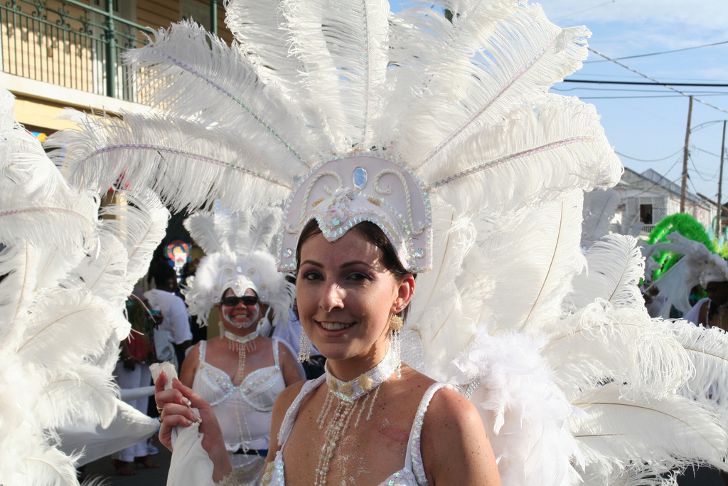Saint Croix's Carnival became an annual event in 1952 when the revival of old holiday traditions transformed into a modern holiday festival. Some of the traditions date back at least to the early 19th century when African slaves working on local plantations were allowed to celebrate Christmas and New Year's Eve.
The celebrations on plantations typically included singing, folk dancing and playing drums and other traditional instruments. In big towns, there were festive parades involving dancing, singing and drumming. The parade participants marched through the town center, often stopping door to door to be treated with wine and rum. Masquerading was an essential part of Christmas and other holidays including Easter and Whit Monday.
These traditions saw some decline in the early 20th century, but some of them were kept alive. Locals still enjoyed signing, playing traditional instruments and dances like bomboula, lancers and quadrille. In the 1950s, old traditions were collected into one big event that was named the Cruician Christmas Carnival.
The Crucian Christmas Carnival focuses on the former holiday celebrations. It starts in mid-December and lasts about four weeks, culminating in the parades held in January. Its program features calypso competitions, Queen and Princess pageants and other events aimed to highlight the island's history and traditions, local crafts and cuisine. Revelers floods the streets, spreading joy and festive mood. Join them and party all day and all night if you want to get the full carnival experience!
The main event is the Carnival Village, it is open for ten days. The live music starts every night at 8 pm, and musicians keep playing until 2 am. Numerous vendors offer hand crafted goods, children's toys, T-shirts, local delicacies and plenty of Caribbean rum. The last two days of the Carnival are the most spectacular because they feature holiday parades. Thousands of performers in vibrant costumes occupy the streets, showcasing Caribbean culture.

Photo by Andrew Royer




